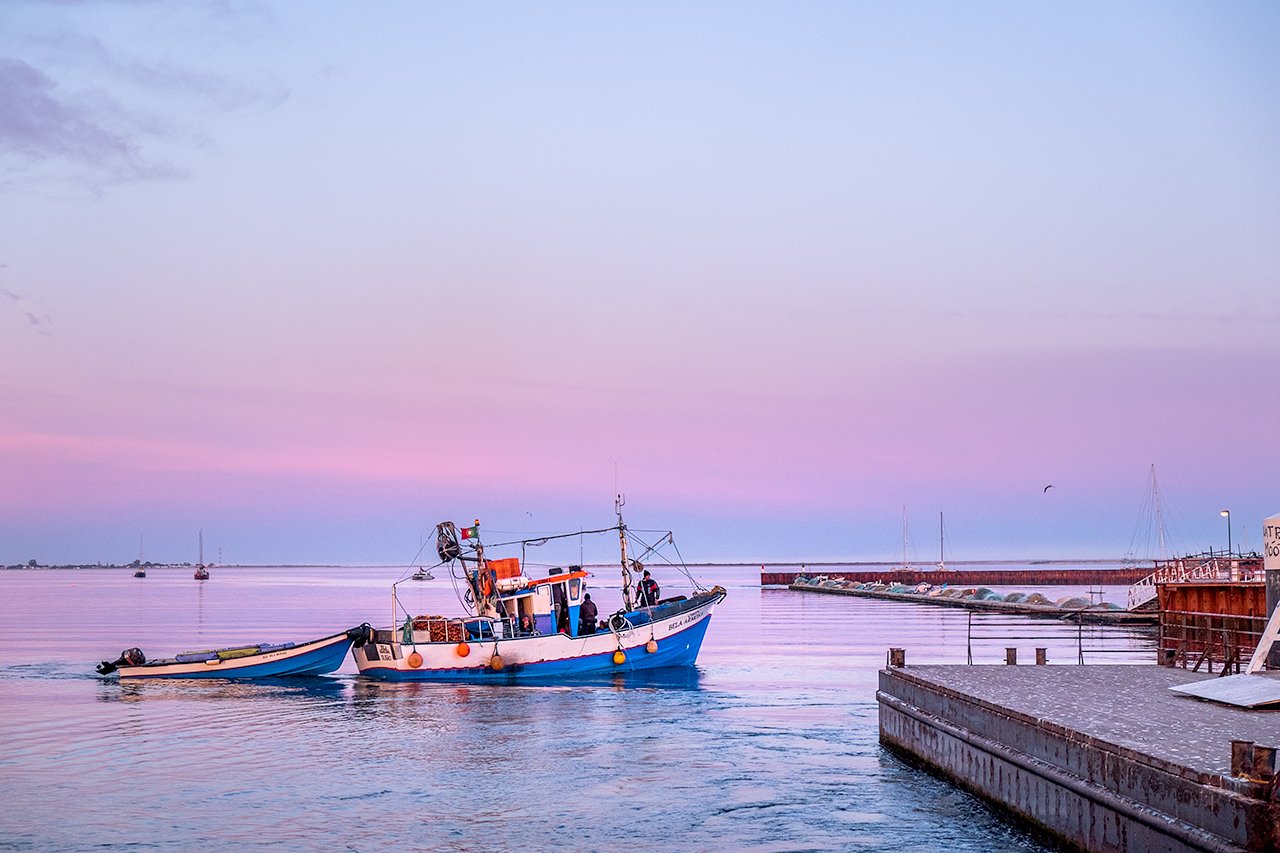
Culatra Island
The territory
Culatra Island
Ilha da Culatra (Culatra Island) is a large sandy island located just south of the cities of Olhão and Faro in Portugal. The island is part of the Ria Formosa National Park and therefore has to follow strict rules for its development.
There are no paved roads on Culatra - once you reach the island by ferry, you will get to know it by foot. The island is about 6 kilometres long, and its width ranges from 100 to 900 meters. Its 1000 inhabitants mainly live off fishing and shellfish culture.
If you want to experience the traditional Portuguese fishermen lifestyle, this is the place to be. You will find idyllic small fishermen houses all over the island. The main attraction of Culatra however is its long, white sandy beach reaching all the way from the West to the East of the island, which is considered to be one of the most beautiful beaches of the Algarve.
The housing nucleus of Culatra Island dates from the 16th century, as a seasonal movement of people who came to work on sardine fishing’ communities.
Due to the abundance of fish and shellfish and the amenity of the waters of the Ria Formosa Natural Park, some families decided to settle, building temporary housing. After these first fixations, a growing movement of population was generated, which implied the progressive multiplication of the constructions.
Due to the territorial isolation, social isolation was much more pronounced, and the community was preserved from all the evolution of the improvement of the living conditions that over time were being created by both the central and local Administration. Faced with these constraints, the resident community engaged in collective actions to seek the suppression of their basic needs, as electricity, drinking water, sanitation, education, health, urban planning, among others. It is in this context, that the Association of Residents of Culatra Island (AMIC) was created in 1987. Since this date, the resident community, as well as the housing nucleus, have been provided with infrastructure and life support that improved significantly the social and economic life of the island’ inhabitants. Most of the work done by AMIC is focused on creating conditions to ensure continuity, sustainability and dignity of the community, preserving the identity and defense of the Culatra Fishing Community. Examples of this collective engagement are the support structures present nowadays on the Island, such as a Chapel, School of Basic Education, Social Centre, Health Care Centre, Red Cross Pole, the distribution of potable water, sanitation and electricity, as well as a Port of Shelter to support the fishing activities.
The combine effort to be resilient of this community resulted in economic development of the population, and it increase capacity to preserve and protect the fragile environment where they live and work. Several actions were put in place such as the seek and carry out scientific and pedagogical activities with the objective of preserving natural resources as a factor of sustainability and development, the protection and dissemination of cultural and historical heritage and, above all, the promotion and defence of citizenship. Recently, and a recognition of their importance as community they were reward, by the National Government, of a legal status to occupy the Public Maritime Domain. Which mean that inhabitants will receive concessions for land use on the next 30 years and be allowed to legalise their housing. These concessions can be renewed if the family makes proof of their continue linkage with the fishing activities.
History
Since 1992, the energy of the island has been supplied by an electric cable that connects the national electricity grid to the distribution network of the island. However, the cable is obsolete, carrying the risk of power outages during the year.
As a result, a diesel generator was installed as a preventive measure. Culatra's housing nucleus has been the focus of some projects of the former Distribution System Operator (DSO), the EDP Distribuição now E-Redes, which resulted in 316 of the homes being currently connected to the electricity grid and having a smart meter installed.
Currently, as a result of the Culatra 2030 Initiative, the island has five photovoltaic production units, totalling 85.8 kWp of installed capacity, which generates around 156.4 MWh per year, covering more than 25% of the community's energy needs during the day; and 46 kWh of Lithium batteries storage, with the installation of another 200 kWp of photovoltaic generation being planned soon.
These facilities allowed decentralized generation from several Production Units for Self-Consumption (UPACs), located at different points in the low voltage network of the Culatra housing unit.
Without the constitution of a Renewable energy Community (REC), it is not possible to distribute energy throughout the community and the generation is injected into the grid without economic benefits for the inhabitants of the island.
In addition to the installed capacity, the Culatra 2030 initiative, through the project “Decarbonization of Aquaculture Activity” (co-financed by MAR2020), enabled the technological development of a solar boat, built in partnership with Sunconcept. The boat has a set of photovoltaic panels that feed a 17.5 kWh battery. A connection point to the electricity grid was also financed in the area of the fishing support infrastructure, allowing interaction with the remaining photovoltaic installation. The entire system was designed so that there can be generation monitoring and remote control, thus integrating with an energy management system designed and under development at the University of Algarve.

